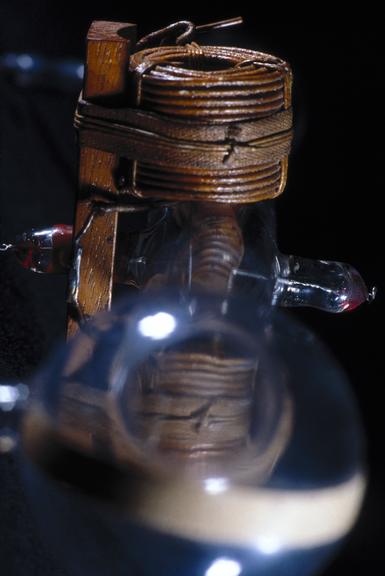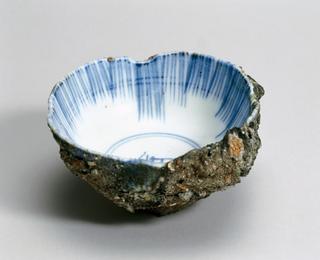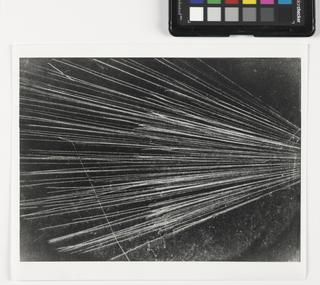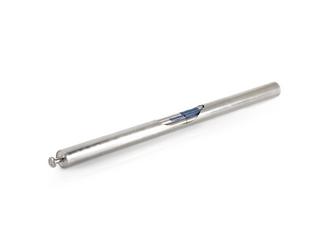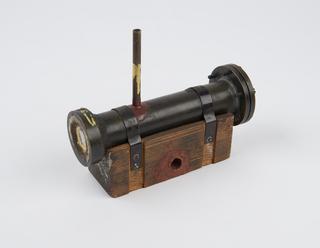J J Thomson's Electromagnetic Tube used in the Discovery of the Electron, about 1896
Electromagnetic (e/m) cathode ray tube, by Sir Joseph John Thomson, Cambridge, England, 1896. Part of the J.J. Thomson's original e/m cathode ray tube apparatus, for measuring the velocity of the cathode rays and the ratio of the mass of the carriers to the charge carried by them.
More
Apparatus for measuring the velocity of the cathode rays and the ratio of the mass of the carriers to the charge carried by them. (J.J. Thomson's original e/m cathode ray tube.)
This is one of the original cathode ray tubes used by Thomson in a series of experiments that led to the discovery of the electron in 1897. Other investigators had observed strange rays emitted from cathodes (negatively charged plates) inside glass vacuum tubes; Thomson's experiments showed that the rays were streams of particles. The electron's discovery was the beginning of an explosion in the understanding of atomic structure, and indirectly led to the electronics revolution of the 20th century.
- Measurements:
-
overall: 120 mm x 350 mm x 50 mm,
- Materials:
- glass (soda-glass) , resin (unidentified) and metal (unknown)
- Object Number:
- 1901-51/1
- type:
- electrons and cathode ray demonstration tubes








